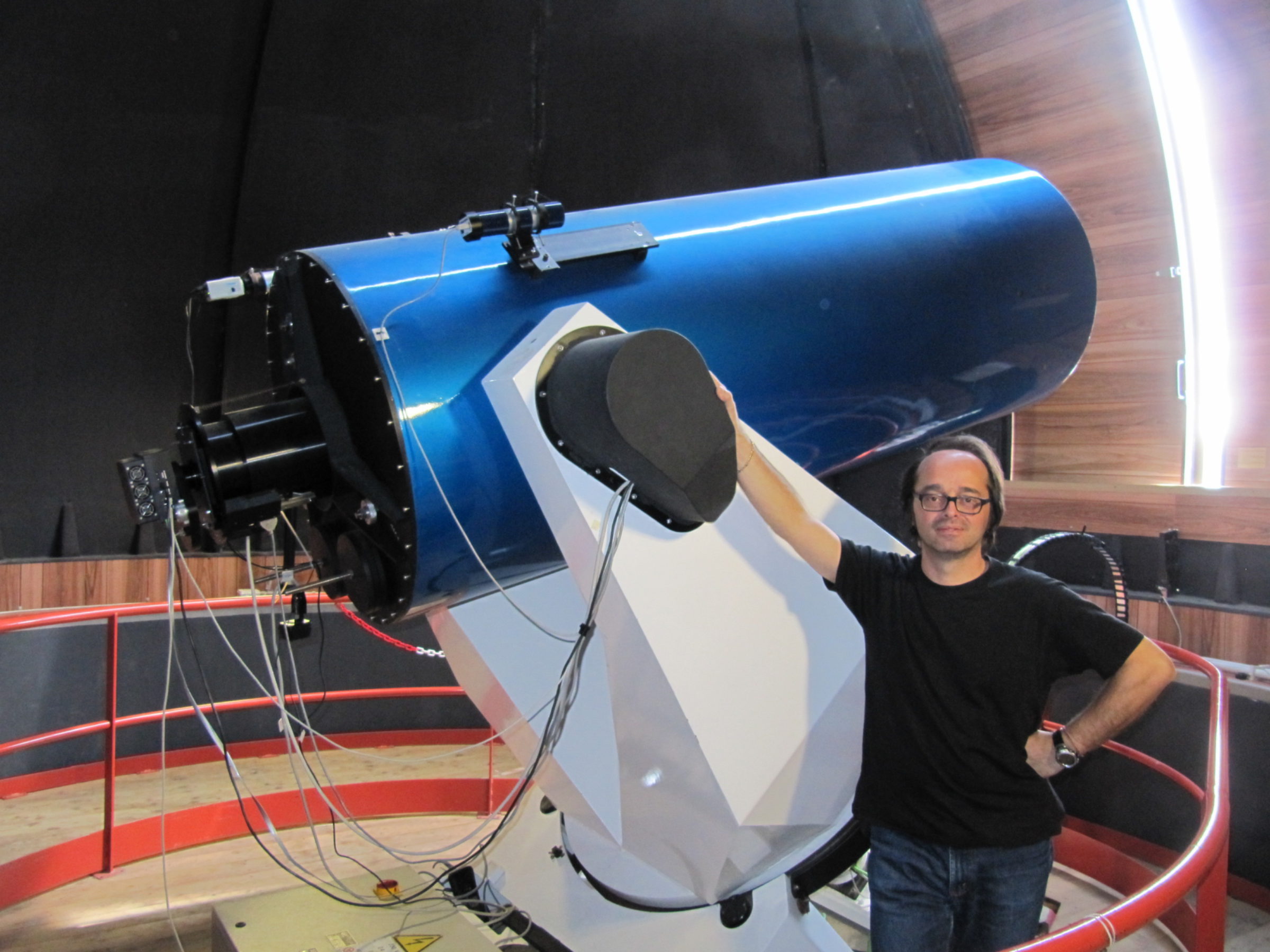Bruce Betts • Mar 31, 2015
Revitalized 0.81m telescope studying properties of NEOs
This is part of a series of updates direct from our Shoemaker NEO Grant winners showing their recent progress in defending the Earth from asteroids, in part using grant money from The Planetary Society. The Shoemaker NEO Grant winners, mostly very talented amateurs with amazing telescopic facilities, do some combination of finding, tracking, and/or characterizing near-Earth objects (NEOs).
This update is from Albino Carbognani a 2013 Shoemaker NEO Grant winner at the Astronomical Observatory of the Autonomous Region of the Aosta Valley (OAVdA) in Italy. Albino Carbognani and his colleagues at OAVdA perform astrometric follow-up observations and physical studies of asteroids.

With their 2013 Shoemaker NEO Grant they re-aluminized the mirror of their 0.81-meter telescope allowing them to reach dimmer than 21st magnitude objects. More recently they acquired and installed a focal reducer that increased the field of view of the telescope, allowing a larger patch of sky to be observed at any one time.

Here's what Albino had to say about their activities through about the end of 2014:
According to the latest update, after the aluminum coating of the mirrors of the Main Telescope and the realignment of the optics, had been pending the focal reducer. The lenses for the focal reducer, built by the company SILO (Florence, Italy), were delivered in December 2013. The aluminum cell of the focal reducer was built and installed on September 2014 by the technician of the INAF-Astronomical Observatory of Turin, and now the reducer is operational as expected.
During the period January to December 2014, with the Main Telescope (RC 0.81-m, f/8 + CCD), we made a number of follow-up observations of the possible NEOs shown in the NEOCP (NEO Confirmation Page) of the Minor Planet Center. The published Minor Planet Electronic Circular and the Daily Orbit Update are shown in the below table:
MPEC 2014 A44 : 2014 AA17 MPEC 2014 B65 : 2014 BD33 MPEC 2014 B72 : 2014 BS43 MPEC 2014 E59 : 2014 EP12 MPEC 2014 P35 : 2014 PG51 MPEC 2014 S109: 2014 SS261 MPEC 2014 S111: 2014 SU261 MPEC 2014 S113: 2014 SV261 MPEC 2014 S115: COMET P/2014 S4 (GIBBS) MPEC 2014 S119: 2014 SJ262 MPEC 2014 R48 : DAILY ORBIT UPDATE (2014 SEPT. 5 UT) MPEC 2014 R56 : DAILY ORBIT UPDATE (2014 SEPT. 6 UT) MPEC 2014 U54 : DAILY ORBIT UPDATE (2014 OCT. 25 UT) MPEC 2014 U85 : DAILY ORBIT UPDATE (2014 OCT. 27 UT) MPEC 2014 U101: DAILY ORBIT UPDATE (2014 OCT. 28 UT)
In October 2014 we published the paper: A. Carbognani, “Asteroids Lightcurves at OAVDA: December 2013 - June 2014”, Minor Planet Bulletin Vol. 41, n. 4, 265-270, October-December 2014. This paper contains the results of photometric observations of twelve asteroids (8 NEAs and 4 MBAs), and at the end there is the following acknowledgement:
Thanks to the Planetary Society for the award of the 2013 Shoemaker NEO Grant to OAVdA which made it possible to upgrade the telescope used to observe the NEAs.
In the months of October and November 2014 the Main Telescope was used for a thesis of a student of the Physics Department of Turin University. The aim of the thesis was to determine the rotation period of some NEAs, (4401) Aditi, 1998 SS49 and 2014 VQ who have the flyby with the Earth. These asteroids are difficult to observe because of the small size and the high angular velocity which obliges to use very short exposure times and frequently change the field of view. The following rotation parameters were obtained:
Asteroid Type Period (hours) Amplitude (mag) (4401) Aditi Amor 6.673 ± 0.002 0.24 (85713) 1998 SS49 Apollo-PHA 5.997 ± 0.008 0.13 2014 VQ Amor 0.1161 ± 0.0001 0.75 The rotation period and the amplitude of the light curve can give information on the shape and the internal structure of an asteroid. Note the very short rotation period of 2014 VQ (see below figure), well below the value of 2.2 h which is the spin-barrier value for the transition from rubble-pile objects to monolithic objects. 2014 VQ is a relatively large asteroid to be so fast and the light curve is single periodic, i.e. there is no sign of a possible complex rotation.
These results will be presented at the next Planetology Congress in Italy, which will be held in the city of Bormio (February 2 to 6, 2015).


Help The Planetary Society support the hunt for near-Earth asteroids:
Support our core enterprises
Your support powers our mission to explore worlds, find life, and defend Earth. You make all the difference when you make a gift. Give today!
Donate

 Explore Worlds
Explore Worlds Find Life
Find Life Defend Earth
Defend Earth

